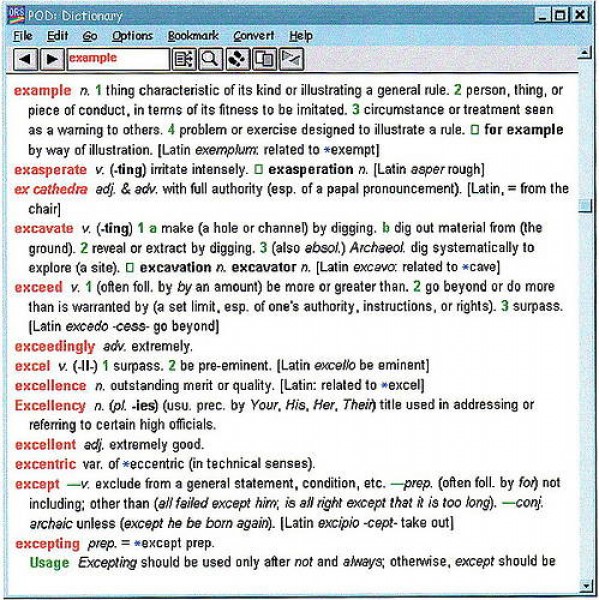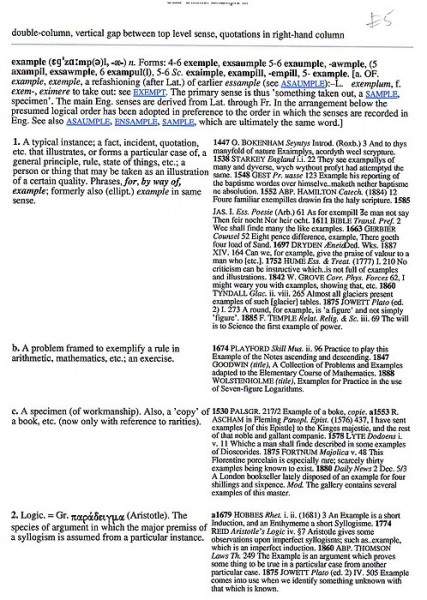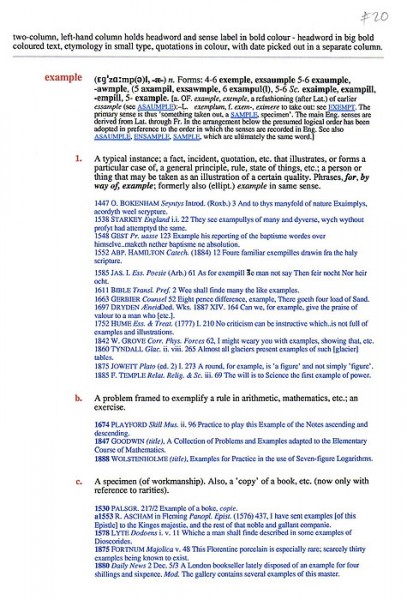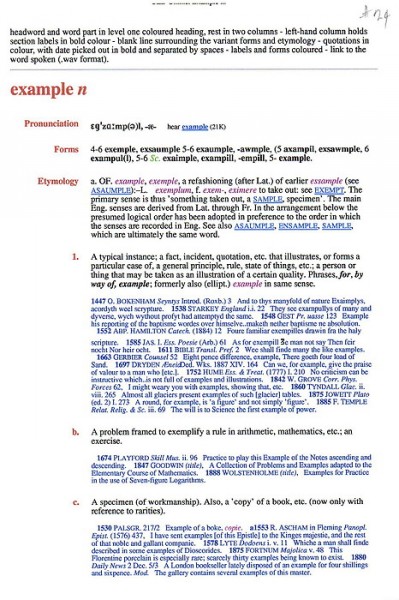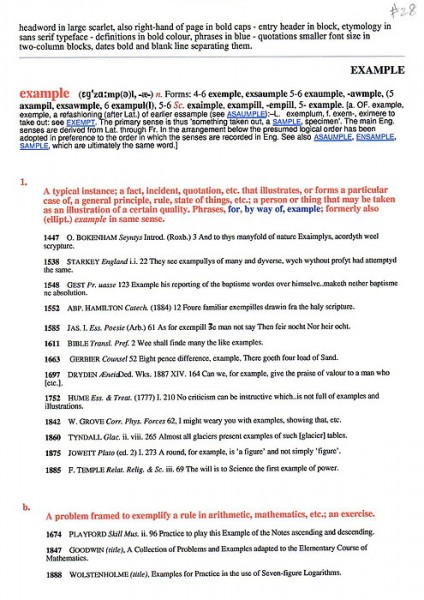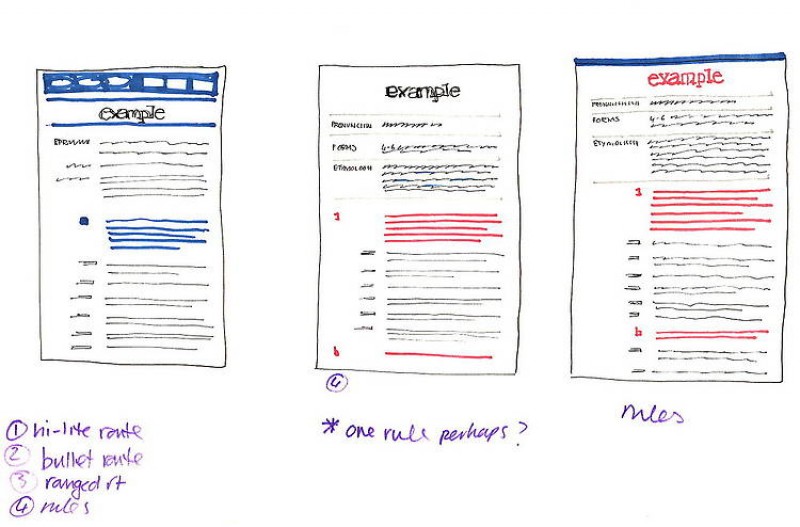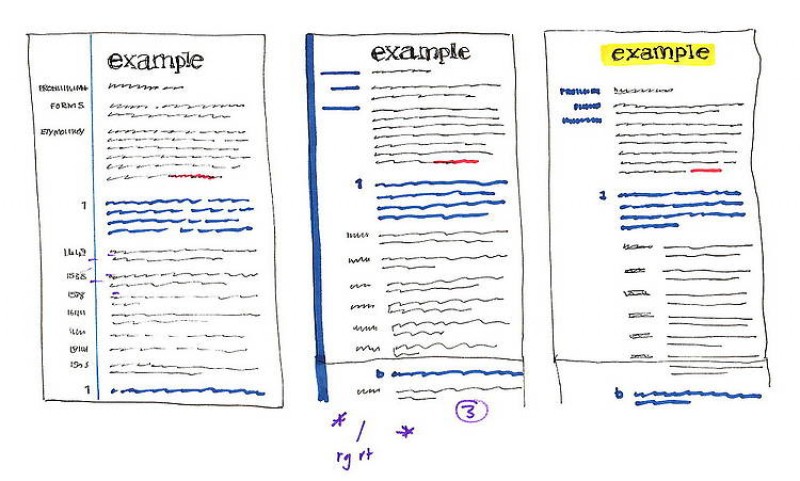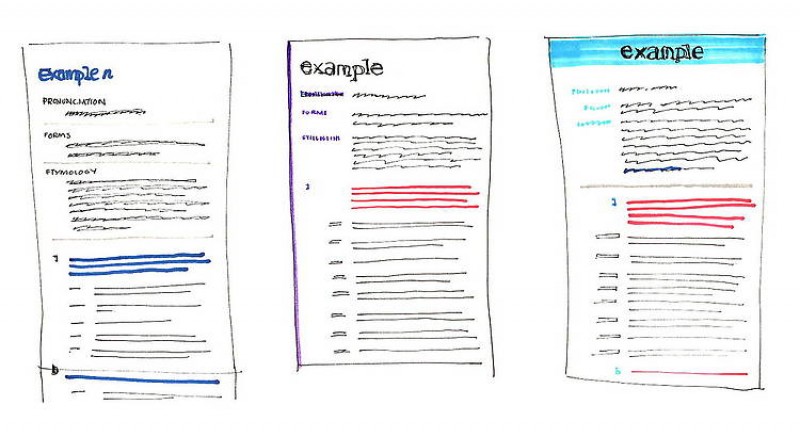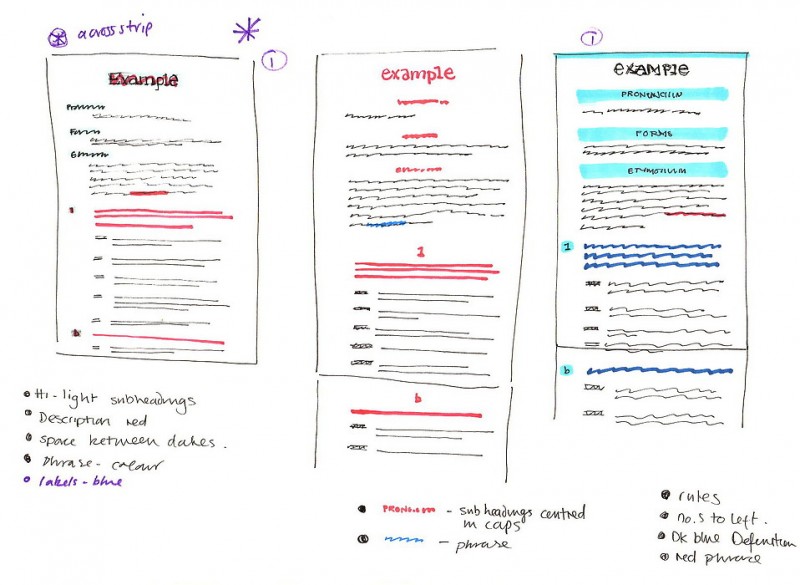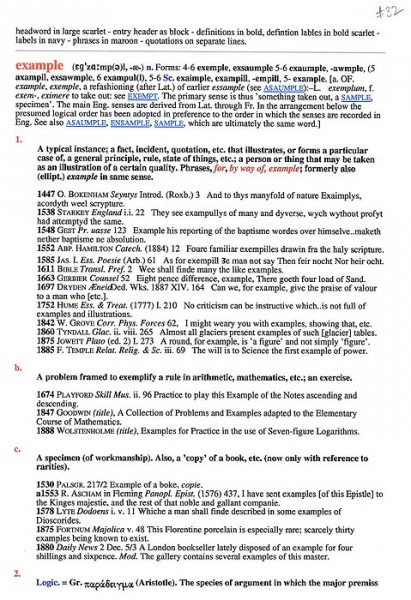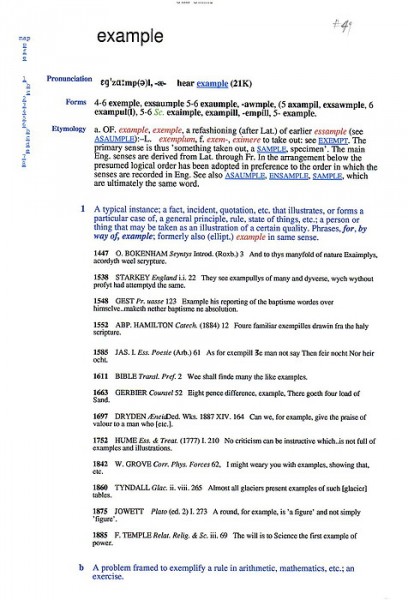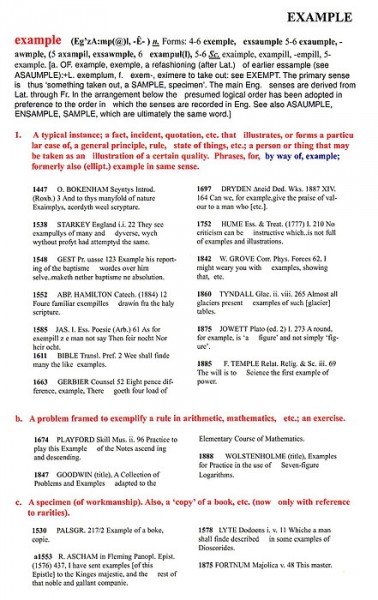OED Online prototype
Research, design and create a prototype of OED Online.
Oxford University Press (OUP) asked Paola to construct a "publisher's dummy", a web site to prototype possible features and functionality of an online version of the Oxford English Dictionary (OED).
Paols didn't know the intention of it when she created it however, the scripted prototype - a linear set of pages designed to cover a range of features and functions - was then taken by OUP to a series of focus group workshops at libraries across the US for market testing.

About the Oxford English Dictionary
The Oxford English Dictionary (OED) is widely regarded as the accepted authority on the English language. It is an unsurpassed guide to the meaning, history, and pronunciation of 600,000 words--past and present--from across the English-speaking world.
Creating a print edition of the OED is a time-consuming and costly business; since 1884, only two complete editions have appeared in print. The second edition was published in 1989; it is 20 volumes containing over 21,000 pages of about 290,000 entries and nearly 2,500,000 quotations.
A revision process started in 1990; entries starting from the letter M are being revised and updated. OED Online includes OED 2, the 3-volume Additions Series and, exclusive to the online version, quarterly updates containing at least 1,000 new and revised entries.
The brief was to explore a web-based OED, including features not possible in the printed dictionary, as well as entry navigation and alternative display styles. A working prototype already existed; OED 2 had been available on tape to some academic institutions, and a member of the OED Reader's Programme had developed a web-based interface to it.
Research
Paola began the project by researching the OED and other dictionaries by Oxford University Press. This included systematic studies of the original prototype, several Oxford CD-ROM dictionaries and the online version of the Encyclopaedia Britannica.
She also reviewed the search options of online search engines to see what features were commonly used; these were relevant as they also dealt with large amounts of structured information.
At the end of this process, Paola had a good idea of what a dictionary entry contained, how it could be displayed and what features existed in computer-based dictionaries.
Screen from a CD-ROM Dictionary

Dictionary entry design
Publishing the OED online provided a freedom of space and formatting not available (affordable) in print. Paola was asked to explore how dictionary entries could be displayed on screen. OED dictionary entries range from several lines to several pages long and are highly structured.
Paola started off the exploration process by doing a web version of the existing print style. She then incrementally applied white space, text size and colour to highlight different features of an entry.
Different entry displays already existed in the CD-ROM dictionaries of Oxford University Press. Some of these were converted to web pages using the existing colours. From this foundation of pages, Paola made small variations to try different combinations.
After creating 16 display variations, Paola invited Tessa Denison of Denison Design to explore the display styles together. The result was a set of 47 variations. Six were chosen to include in the prototype to get the reaction from the focus groups.
Denison Design eventually did the visual design for the second version of the OED 2 CD-ROM and OED Online.
Extracts from some of the systematic designs
The prototype
The prototype consisted of a series of about 30 linked pages. By clicking on specific links or buttons in pages, it looked like it was searching the dictionary, listing results and entries which attendees could then navigate.
Paola helped write the material for the focus group attendees to use when going through the dummy. The notes were in the form of scripted steps to follow in the dummy. For each page, the main features were listed, and focus group attendees were asked to consider specific questions before proceeding to the next step.
The script took focus group attendees through possible features and functionality of an online OED:
- Home page, listing the main areas of the online service
- Quick search (from the home page) and the results list
- Entry display
- Navigation to an adjacent entry
- Search with wildcards
- Results list
- Entry display with hit highlighting
- Browse entries (5 summary entries on a single web page)
- Free-text search
- Results list showing context following a free-text search
- Save search and managing saved searches
- Repeating a saved search
- Preferences options
- Entry displayed after changing display preferences
- The six alternative entry layouts
The prototype went through several versions. The first version was available in framed and frameless versions.
An entry page from the prototype
Research web site
Paola design, built and maintained a web site for the team which visited libraries across the US to do user testing with the prototype.

